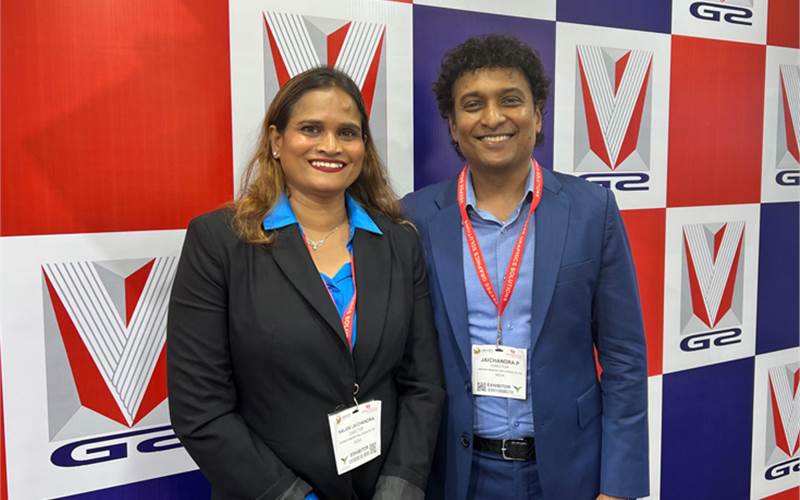Short-runs, fast TAT paving the way for narrow-web UV: Jaichandra of Veepee
In a conversation with Noel D’Cunha, Jaichandra of Veepee Graphic Solutions explains why there has been a marked growth in UV within flexo printing.
15 Nov 2022 | By Noel D'Cunha
Noel D'Cunha (ND): What are the trends of flexible packaging on narrow web using UV inks?
Jaichandra (JC): Of late, we have seen a lot of flexible packaging jobs, especially shrink sleeve, moving from gravure and wide-web flexo to narrow-web UV, mainly because the run lengths are getting shorter and have a tight turnaround time. Lower development costs, quick job changeover, lower wastage and short job setup time compared to gravure and wide-web flexo are the other reasons for this shift. The quality of print is far better with UV compared to solvent-based inks.
ND: Short-run printed, first reverse on 12 to 15 microns wet, then rendered with three layers of laminations in flexibility. How do you see that happening?
JC: Laminate is something which we can’t say no to. Getting the same family of material to be laminated is the trend considering the sustainability aspect. We have seen a few converters successfully do this in narrow-web, which will open up a huge market for this industry considering the demand for shorter run lengths.
ND: What kind of a percentage change are you seeing and when would that happen?
JC: I would say 15% to 20% and it is growing. I deduce in less than five years there will be a shift from narrow-web to mid-web UV presses which can handle flexible packaging and labels thereby making the investment more viable as the machine can print on multiple substrates thereby catering to a much wider market.
ND: We see a lot of inline spot UV with matte and gloss substrates. From a free press segment, what is your take on this?
JC: Embellishments have been there for a long time, but could be achieved only with multiple passes or separate processes, which increased the cost of production as well as longer turnaround time. Whereas in narrow-web flexo you can do your full colour print with two or three varnishes, foiling and the embossing, all in one go. Embellishments, if well implemented, will not only enhance the aesthetic look of the label, but also make it very difficult for it to be duplicated.
ND: Why is it happening that all the gravure jobs are coming to flexo? The question is one driver, in terms of quality and consistency, gravure is better.
JC: Gravure print quality is better, but now with our new hybrid screening, we can bridge this gap within wide-web flexo. Traditionally, 150-lpi is what could be reproduced in wide-web using solvent based inks, but with the new screening technology, we have successfully reproduced fine halftones equivalent to 250–lpi with the standard print conditions. Apart from the sustainability factor, lower development costs, faster turnaround times, lower wastage, ability to print stretchable substrates and not to mention, the cost of investment, we are seeing a steady shift of jobs from gravure to flexo.
ND: What are the consumption patterns that your customers have seen in the last few months?
JC: During and post-Covid, the pharma segment is what kept us busy. Once the Covid settled and the economy was beckon track, FMCG started picking up steam with the brand owners coming up with frequent design changes and offers to get back the lost market share. This phase was very good as far as trade shop business was concerned, and I am sure it was the same for converters as well.
ND: So one of the recent reports said that one of the liquor companies' revenues grew by 21% which would result in a lot of label work. And how has the last year been for you?
JC: There was a sudden spike in the liquor segment once the lockdown was lifted, and yes, the converters catering to this industry were highly benefited. We have done reasonably well in the last financial year compared to the previous two years, and hope to maintain this growth, invest in new technologies and build up our infrastructure to expand our production capacity.












 See All
See All